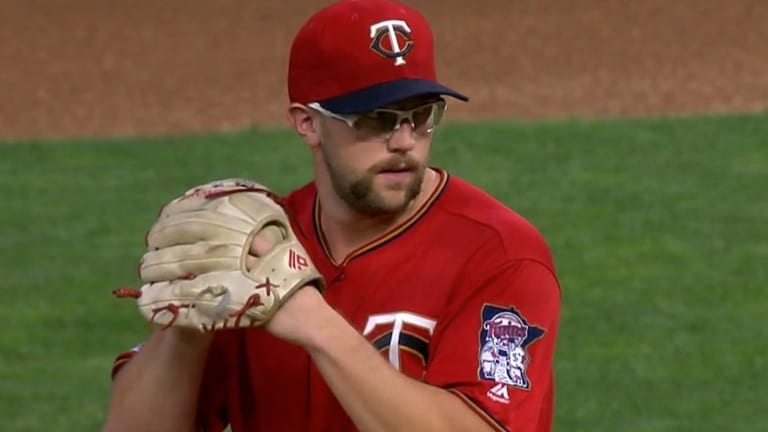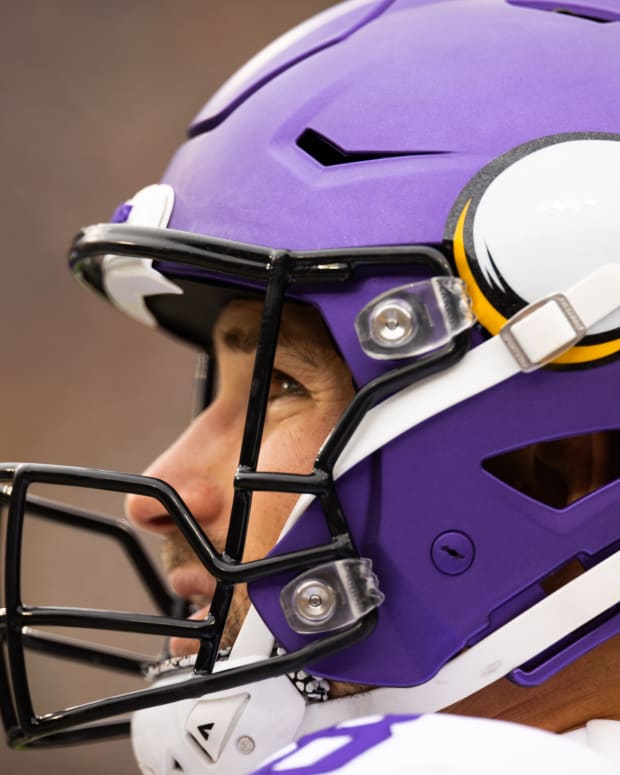
Twins Daily: Randy Dobnak is better than you think

Among the group of Twins internal starters without a firm place for 2020, but with a clear chance to assert themselves, one name stands out: Randy Dobnak. No other in-season reinforcement had the kind of impact Dobnak had, and none of them have as much potential to be a valuable starter throughout 2020.
Dobnak isn’t just a good story and a quirky look; he’s a legitimate starter. After all, 2019 was just his second full season as a professional, and he scaled four levels to reach the big leagues. He pitched 163 innings, and at all four stops he was above-average according to both of Baseball Prospectus’s key pitching metrics, cFIP and DRA-.
Some of what he did in the big leagues in 2019 is undeniably unsustainable. Of the 514 pitchers who threw at least 400 pitches, only one induced a higher percentage of swings on pitches outside the strike zone than did Dobnak—Ryan Pressly. Twins fans know well what Pressly can do with the ball; Dobnak isn’t quite on that level. Inevitably, batters will force Dobnak to throw more strikes going forward, and that means he’s unlikely to keep his walk or home-run rates as low as they’ve been thus far.
Even once the league adjusts to him, though, Dobnak will have some things going for him that can’t be ignored. Let’s break down his four-pitch arsenal, piece by piece, to see why the Twins could reasonably project their diamond in the rough to be a solid starter at the back end of their rotation in 2020.
Sinker
Dobnak comes at hitters from the first-base side of the rubber, with a pretty simple delivery and a pretty low arm slot. His posture is excellent, which has helped him repeat that delivery and demonstrate good command.
It’s also the perfect mechanical signature to support his sinker, which is a heavy, low-spin thing batters couldn’t figure out in 2019. Of the 263 pitchers who threw at least 100 sinkers this year, Dobnak had the 12th-most sink, and because he located it so consistently at the bottom of the zone, that heavy action led to a ground-ball rate just under 70 percent on the pitch.
Sinkers are going out of vogue, league-wide, as batters find ways to square up and elevate the pitch and pitchers look for offerings with more unconventional movement, chasing swings and misses. As well as Dobnak executes his particular sinker, though, he should stick with it, at least as a complementary offering.
Slider
In some quarters, it’s controversial even to call Dobnak’s slider a slider. It’s read as a curveball by Statcast, and that’s understandable. The pitch has a very vertical shape, and 90th-percentile vertical depth. It doesn’t sweep like a conventional slider, especially one typically thrown from an arm slot like Dobnak’s.
That, in fact, is what makes it so dastardly. When Dobnak served as an opener in Boston just after Labor Day, he got a couple of swings and misses on the slider. The reactions of the Red Sox broadcast team (that night, Dennis Eckersley was in the booth) tells the story of the Dobnak breaking ball succinctly. Eckersley was flabbergasted by the action of the pitch.
A replay showed the team how Dobnak releases the ball very much like a slider, getting around the ball as opposed to creating topspin the way a curve does. It also showed the lack of any hump out of the hand, disguising the breaking ball better than curves do. As Eckersley explained, a pitch thrown that way, from that slot, should have more sweep and less plunge to it.
Hitters did no better at solving the Dobnak slider than did Eckersley. He induced whiffs on over 46 percent of swings on the pitch. He got swings on over 56 percent of the sliders he threw, despite rarely throwing the pitch for a strike. When he did land it in the zone, he froze opponents and got called strikes with a regularity usually reserved for curveballs.
The sample is, admittedly, tiny, but Dobnak’s slider had all the markers of an extremely effective pitch. The list of guys with comparable results on the pitch, based on whiffs, pop-ups, and called strikes, starts with elite relievers Will Smith and Felipe Vázquez. Batters will adjust, but they can’t solve the pitch, because it’s genuinely special.
Four-Seamer
Though not his least-used offering, the four-seamer is the weakest pitch in Dobnak’s arsenal, and the one he needs to hone if he wants to thrive and push his ceiling higher. He doesn’t spin it especially well, and it’s a low-rise fastball, which is a tough pitch for which to find a role in this day and age. Hitters see it less as heavy than as flat, and therefore hittable.
The best comparison point for Dobnak’s fastball might be that of Mike Leake, who is also a sinker-first guy who relies on athleticism and has a relatively low slot, but Leake has a cutter that keeps hitters honest. If Dobnak can just learn to locate the four-seamer up in the zone, he can get away with it as a changer of eye levels. If he can develop a pitch with a bit more armside movement, he can really start to use the four-seamer as a weapon, but for now, it’s a pitch he throws purely to burn hitters sitting on sinker or slider, and he’s not likely to succeed in that endeavor for long.
On the other hand, Leake throws in the upper 80s with his heat. Dobnak’s four-seamer can find a gear his sinker can’t, and sometimes touches 95 or 96 miles per hour. Again, then, it comes down to whether he can get comfortable firing that heat toward the top of the zone, despite his mechanical signature, and without radically altering his release point.
Changeup
Because of the unique movement on his slider and his sinker-first fastball profile, Dobnak doesn’t need his changeup as much as most right-handed starters do. When he brought it out in 2019, however, it seemed a viable offering. He commands it well enough to the first-base side of the rubber to use it against righties, which is relatively rare.
He can also fool lefties really effectively with it because of the velocity gap between the change and his fastballs. Movement-wise, however, there’s very little difference between his change and sinker, so once more, some of his effectiveness will be dictated by his ability or inability to start using the four-seamer above the belt.
There’s no chance Dobnak explodes into some new strata from here. He’s not going to give the team the upside it needs in its rotation, which is why they still need to aggressively explore options to add a new ace or co-ace at the front end.
However, whereas it would be easy to view him as an extra option or a swingman, the team should view Dobnak as a credible fourth or fifth starter, someone they can count on enough not to spend free-agent dollars on a marginal option like Rick Porcello or Homer Bailey. Dobnak can do anything those guys can do. Derek Falvey and Thad Levine should be out there selling someone who can genuinely change the equation on being a Twin, and spend whatever money they might otherwise throw at a lesser second option at that primary target as a sweetener.
This story first appeared at Twins Daily and was re-shared through a collaboration with Bring Me The News.









